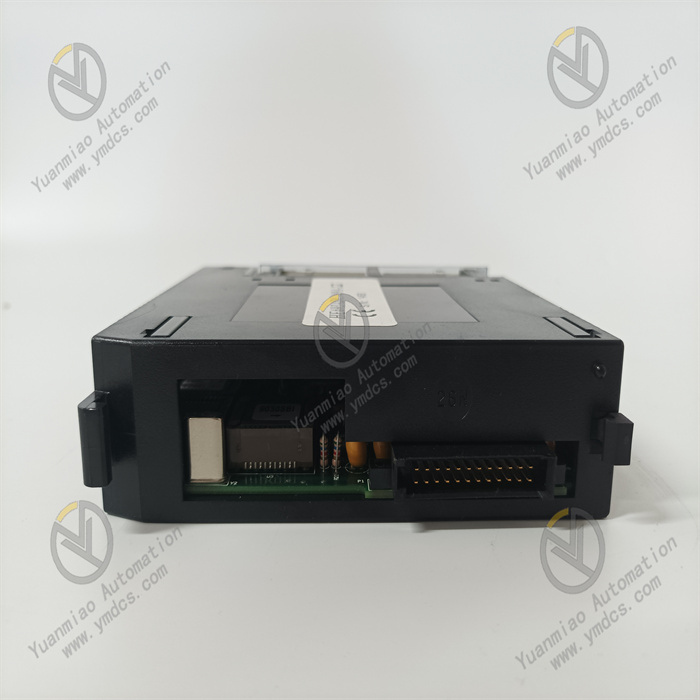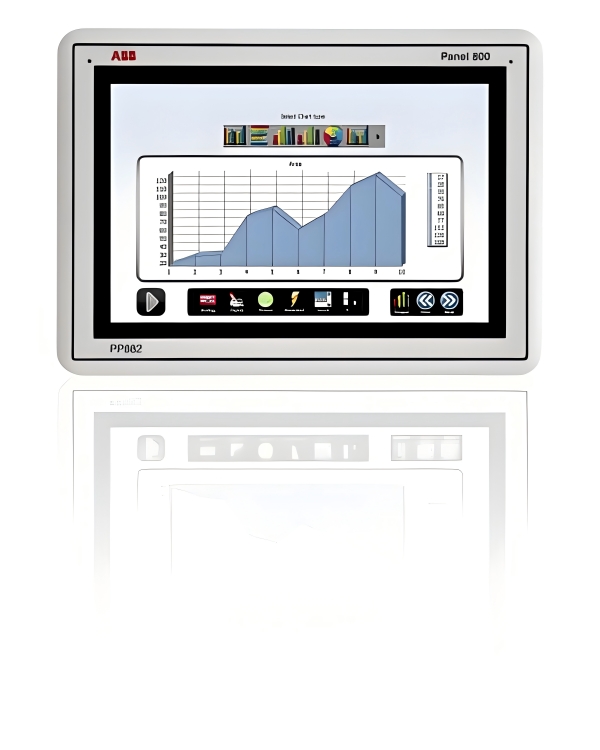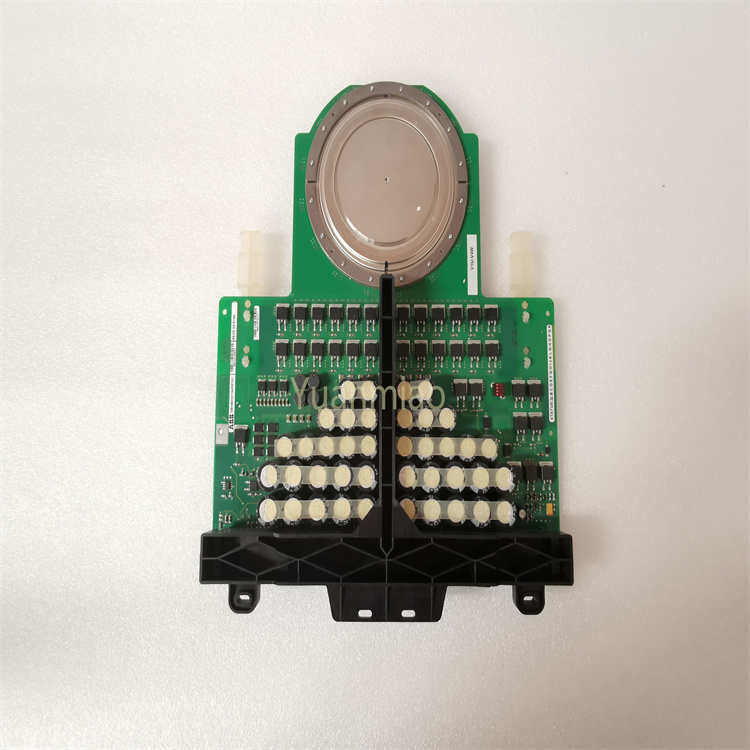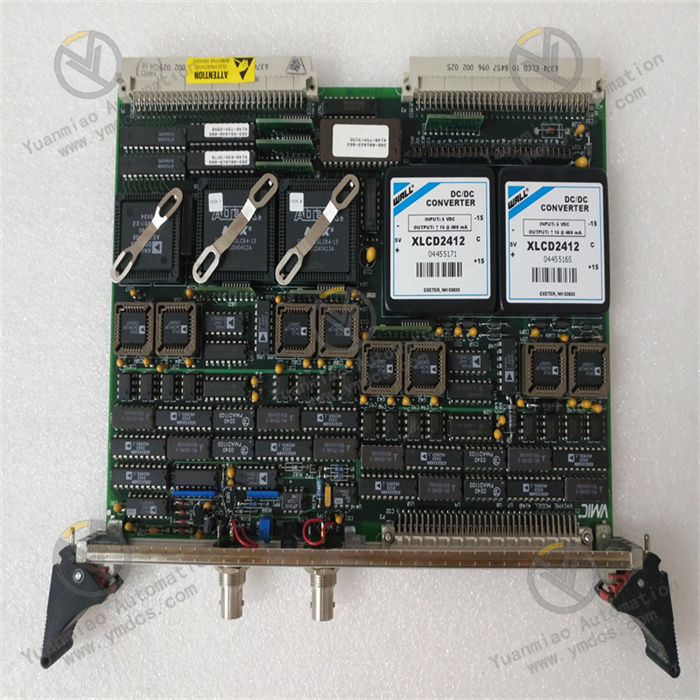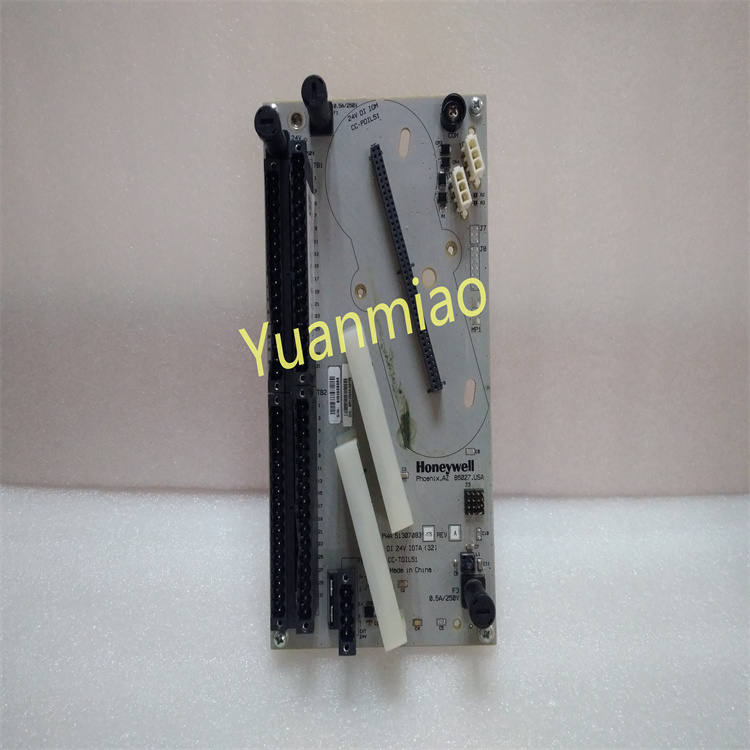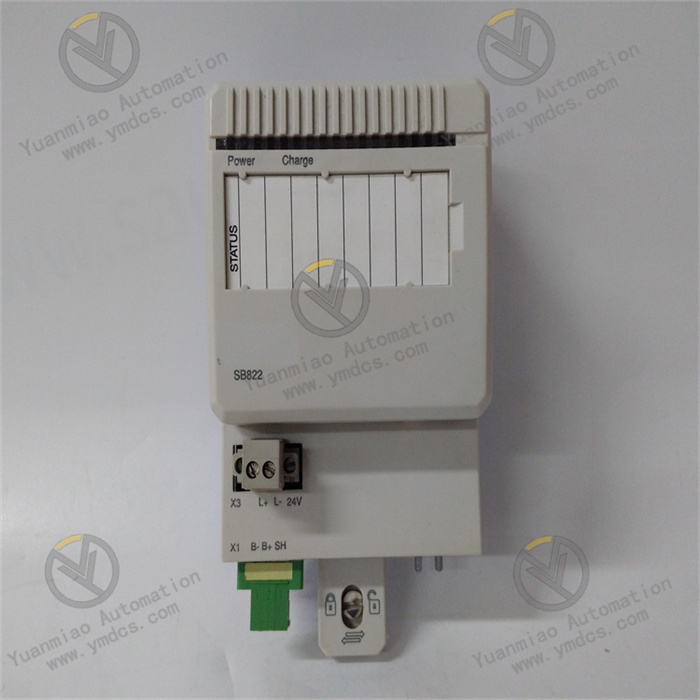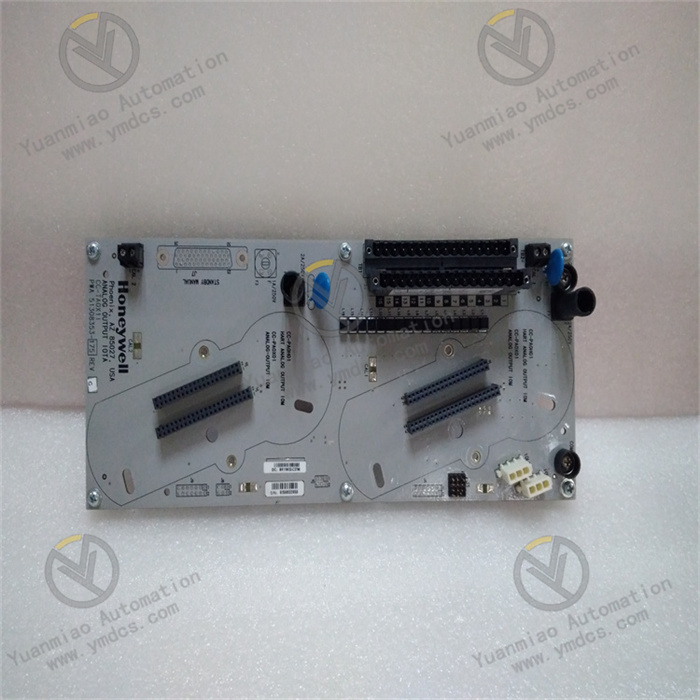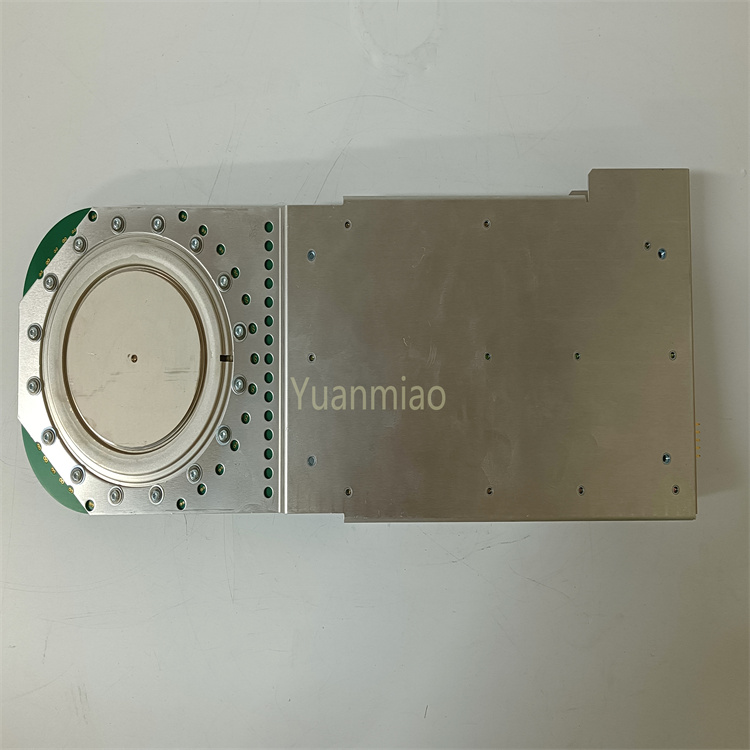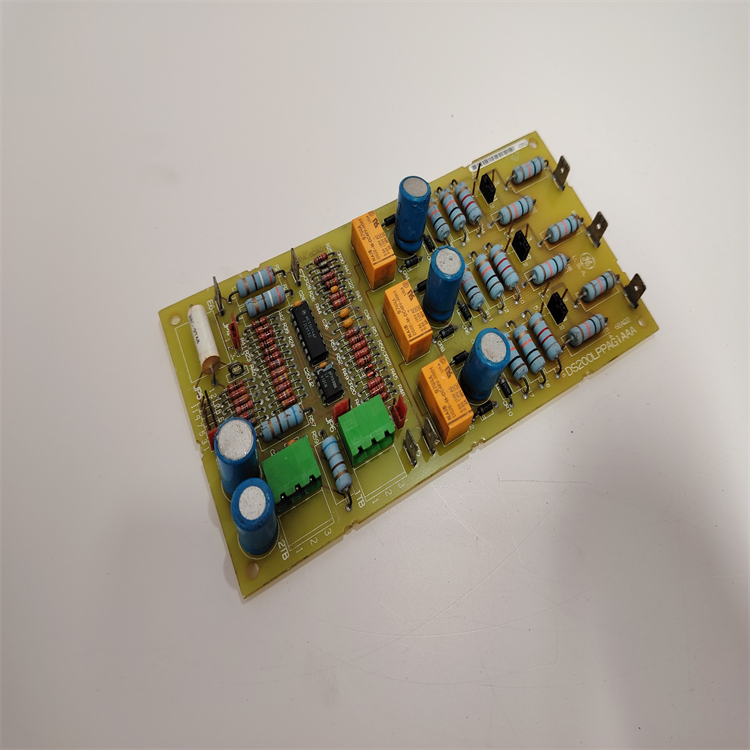Description
GE HE693ADC409A-22
The GE HE693ADC409A-22 is a high-precision millivolt-level analog input module in the GE HE693 series of industrial control modules. Specifically designed to meet the weak signal acquisition requirements of PLC systems, its core positioning is to provide an integrated signal processing solution that enables "direct acquisition - accurate conversion - stable transmission". As a key interface component connecting on-site weak signal sources (such as load cells and strain gauges) to PLC control systems, its essential function is to directly convert the millivolt-level DC signals output by sensors into digital signals using integrated A/D conversion technology, and then write these digital signals into the %AI input table of the PLC. This eliminates the need for additional signal transmitters or converters, significantly simplifying the system architecture.
This product adopts a standardized modular design, compatible with GE's mainstream PLC systems. It features core characteristics including 14-bit high resolution, ±0.05% high accuracy, and configurable digital filtering, enabling stable signal acquisition even in the high-interference environment of industrial sites. With its flexible design of 4 independent acquisition channels and adjustable multi-ranges, it is widely used in scenarios such as weighing control in manufacturing, pressure monitoring in process industries, and tension detection in the energy sector. It serves as a core sensing unit in industrial measurement and control systems, ensuring "signal fidelity - data accuracy - reliable decision-making".
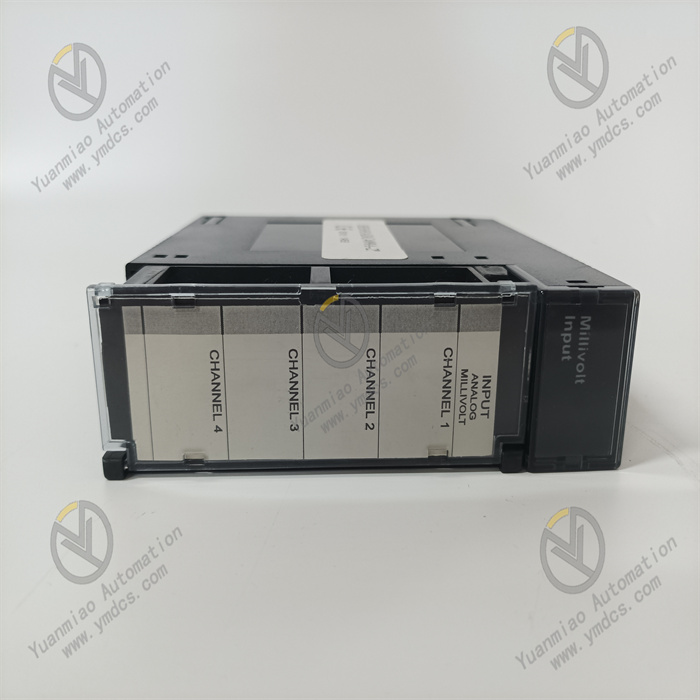
- Number of Channels: Equipped with 4 independent analog input channels, supporting isolation between channels. It can simultaneously acquire millivolt-level signals from 4 different signal sources without mutual interference.
- Range Options: Supports three adjustable ranges: ±25mVdc, ±50mVdc, and ±100mVdc. Users can flexibly select the appropriate range based on signal strength via configuration software or a Hand-Held Programmer (HHP), making it compatible with the output characteristics of sensors with different sensitivities.
- Resolution Performance: Achieves differentiated high-precision resolution for different ranges. The resolution can reach 3μV for the ±25mV range, 6μV for the ±50mV range, and 9μV for the ±100mV range, ensuring the ability to capture details of weak signals.
- Conversion Accuracy: The accuracy reaches ±0.05% over the full range, far higher than that of ordinary industrial-grade analog modules (typically ±0.1% to ±0.2%), meeting the requirements of precision measurement and control scenarios.
- Conversion Type and Rate: Adopts integral A/D conversion technology, which offers excellent anti-interference capabilities. The module update rate can reach 35 channels per second, enabling rapid response to dynamic changes in signals.
- Input Impedance: Features an ultra-high input impedance of ≥20MΩ, minimizing the load impact on the signal source. It is particularly suitable for strain gauges and micro-sensors with weak output capabilities.
- Power Supply Requirement: Powered directly by the PLC system, with a typical power consumption of 5Vdc and 100mA. No additional independent power supply is needed, simplifying system wiring.
- Overload Protection: Has a maximum safe overload capacity of ±35Vdc. When the input signal exceeds the upper limit of the range, the module automatically activates protection to prevent damage to internal circuits caused by overvoltage.
- Common-Mode Rejection: The common-mode voltage range reaches ±12Vdc, which can effectively suppress common-mode interference signals in industrial sites and ensure the stability of weak signal acquisition.
- Operating Temperature: Supports an industrial-grade operating temperature range of 0°C to 60°C, suitable for most workshop, control room, and outdoor equipment cabinet environments without the need for additional temperature control devices.
- Humidity Tolerance: Can operate continuously in an environment with 5% to 95% humidity (non-condensing), adapting to humid production scenarios such as textile and food processing.
- Anti-Interference Performance: When combined with the optional digital filtering function, it can provide stable input signals in high-electromagnetic-interference environments with dense frequency converters and motors, preventing signal fluctuations from affecting measurement accuracy.
- Dimensional Specifications: Adopts the standard modular dimensions of the HE693 series, suitable for dense installation layouts in PLC control cabinets. It can be seamlessly combined with digital modules, communication modules, and other components.
- Wiring Method: Uses a detachable 20-pin terminal block for on-site wiring, facilitating wiring operations and enabling line reuse when replacing the module.
- PLC Compatibility: Natively compatible with GE Fanuc series PLCs and Horner industrial control systems. It can be directly connected to the I/O expansion bus of the PLC without additional adapter modules.
- Programming Support: Supports operations such as range selection and filtering parameter setting via GE PLC configuration software or a Hand-Held Programmer (HHP), meeting the needs of rapid on-site debugging.
Unlike traditional analog modules that require matching signal transmitters, this module can be directly connected to devices that output millivolt-level signals, such as load cells and strain gauges. This eliminates the intermediate links of signal amplification and conversion. Taking a 100kg load cell as an example, its output signal is usually ±20mV, which the module can directly acquire and convert. This not only reduces the procurement cost of transmitters but also avoids signal attenuation and distortion in intermediate links, reducing measurement errors by more than 30%.
The combination of 14-bit resolution and ±0.05% accuracy endows it with excellent weak signal capture capabilities. In the ±25mV range, a resolution of 3μV means it can detect a signal change of 0.003mV, which is equivalent to being able to detect a weight change of 0.1g in a load cell (taking a 100kg load cell with a 20mV output as an example). This high-precision feature ensures the measurement accuracy of key parameters in industrial measurement and control, providing reliable data support for quality control and process optimization.
The three adjustable ranges allow the module to be compatible with sensors of different sensitivities: a wide range can be selected for low-sensitivity strain gauges (with ±100mV output), and a narrow range can be selected for high-sensitivity load cells (with ±25mV output), balancing the measurement range and accuracy. At the same time, the optional digital filtering function can adjust filtering parameters according to the on-site interference intensity. Even in high-interference environments such as motor start-stop and frequency converter operation, it can still output stable signal data, preventing PLC misjudgments caused by false signals.
The standardized modular structure makes its installation and replacement extremely simple: wiring can be quickly completed through the 20-pin terminal block, and it can be put into use by directly connecting to the PLC backplane bus. When the module malfunctions, there is no need to disassemble the entire set of lines; the terminal block only needs to be unplugged to replace the module with a new one, and the replacement time of a single module can be controlled within 10 minutes. In addition, the module status and collected data can be monitored in real-time through PLC programming software, facilitating rapid on-site troubleshooting of signal anomalies.
In the automatic weighing and batching system of a food packaging production line, the core role of the HE693ADC409A-22 is reflected in the following aspects:
- Direct Acquisition: The 4 channels are respectively connected to 4 load cells (such as pressure-type weighing modules at the bottom of a silo), directly acquiring the ±50mV signals output by the sensors without the need for a weighing transmitter.
- Accurate Conversion: Converts weight signals into digital quantities with a resolution of 6μV, and cooperates with PLC programs to achieve weight detection at the 0.1g level, ensuring that the weight deviation of each packaged product is controlled within ±0.5g.
- Anti-Interference Guarantee: After enabling the digital filtering function, it can filter out interference signals generated by the vibration of the packaging machine, reducing the fluctuation range of the collected weight data from ±5g to ±0.2g and improving batching accuracy.
In the pressure monitoring system of a chemical reactor, the application value of this module is significant:
- Sensor Compatibility: Directly connected to a strain gauge-type pressure sensor, it acquires the ±25mV deformation signal generated by the sensor due to pressure changes, corresponding to the 0-10MPa pressure range of the reactor.
- Data Fidelity: The high accuracy of ±0.05% ensures that the pressure measurement error is ≤0.005MPa, meeting the strict pressure control requirements of chemical processes (for example, polymerization reactions need to be stabilized at 5.0±0.01MPa).
- Safety Interlocking: When the collected pressure signal exceeds the threshold set by the PLC, it triggers interlocking logic through the %AI table to quickly shut off the feed valve and avoid overpressure accidents.
In the tension control system of a cable production line, the module realizes the following key functions:
- Multi-Channel Synchronization: The 4 channels simultaneously acquire signals from tension sensors, monitoring the tension status of the three links (pay-off, traction, and take-up) in the cable production process respectively to ensure uniform force on the cable.
- Range Adaptation: According to the tension requirements of cables of different specifications (with diameters ranging from 0.5mm to 5mm), the ±50mV or ±100mV range is switched via programming software, adapting to the tension measurement range of 10N-500N.
- Dynamic Response: The update rate of 35 channels per second can capture tension fluctuations in real-time (such as instantaneous tension changes when a cable joint passes through), and cooperate with the PLC to realize dynamic tension adjustment.
In the thickness monitoring system of plywood production, the advantages of the module are fully demonstrated:
- Weak Signal Capture: Directly connected to the millivolt-level output terminal of a laser displacement sensor, it acquires the ±100mV signal generated by changes in plate thickness, corresponding to the thickness range of 0-20mm.
- High-Precision Conversion: A resolution of 9μV enables thickness detection accuracy of 0.0018mm, ensuring that the thickness deviation of plywood is controlled within ±0.02mm, which complies with building materials industry standards.
- Environmental Adaptation: In a workshop environment with a lot of dust, no additional signal processing equipment is needed. The module's own high input impedance characteristic can prevent signal attenuation caused by dust.
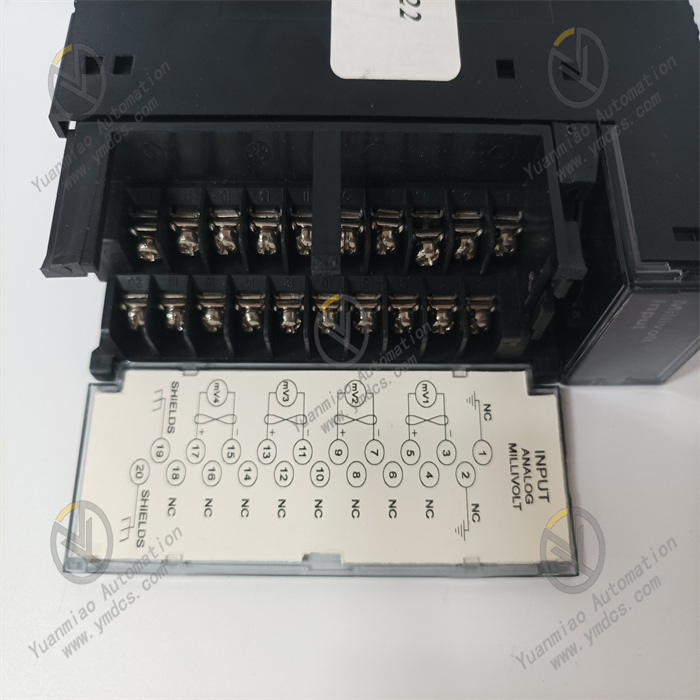
- Adopt the PLC backplane bus installation method to ensure a firm connection between the module and the PLC host or expansion rack. Reserve an installation gap of ≥5mm to ensure smooth heat dissipation.
- The installation location should be far away from high-power frequency converters, high-voltage cables, and other strong electromagnetic interference sources (with a distance of ≥50cm). At the same time, avoid direct contact with heat sources (such as heaters and power resistors) to prevent the ambient temperature from exceeding the 0-60°C range.
- Use shielded twisted-pair cables for signal lines. Ground the shield layer at one end (with a grounding resistance of ≤4Ω). Avoid parallel routing with power cables; if crossing is necessary, keep a 90° vertical angle to reduce interference.
- When wiring, strictly distinguish between the signal positive (+), negative (-), and ground (GND). The wiring of the 4 channels must be accurately matched with the pins of the terminal block to prevent signal distortion or module damage caused by reverse connection.
- Power is supplied directly by the PLC backplane, so no additional wiring is required. Ensure the stability of the PLC power supply system (with a 5Vdc output fluctuation of ≤±0.1V).
- Range Configuration: Access the module configuration interface via GE PLC configuration software or a Hand-Held Programmer (HHP). Select the corresponding range (±25mV/±50mV/±100mV) according to the output signal range of the sensor. Each channel can be configured independently.
- Filter Setting: In high-interference environments (such as near motors), enable the digital filtering function and set a filtering depth of 8-16 sampling points. In high-precision scenarios (such as weighing), set 1-4 sampling points to balance accuracy and response speed.
- Calibration Operation: Regularly calibrate the module using a standard signal source (such as a high-precision millivolt generator). Input 0mV and full-range mV signals into the module, and check whether the digital quantity in the PLC %AI table is consistent with the theoretical value. If the deviation exceeds ±0.05%, re-calibration is required.
![]()






